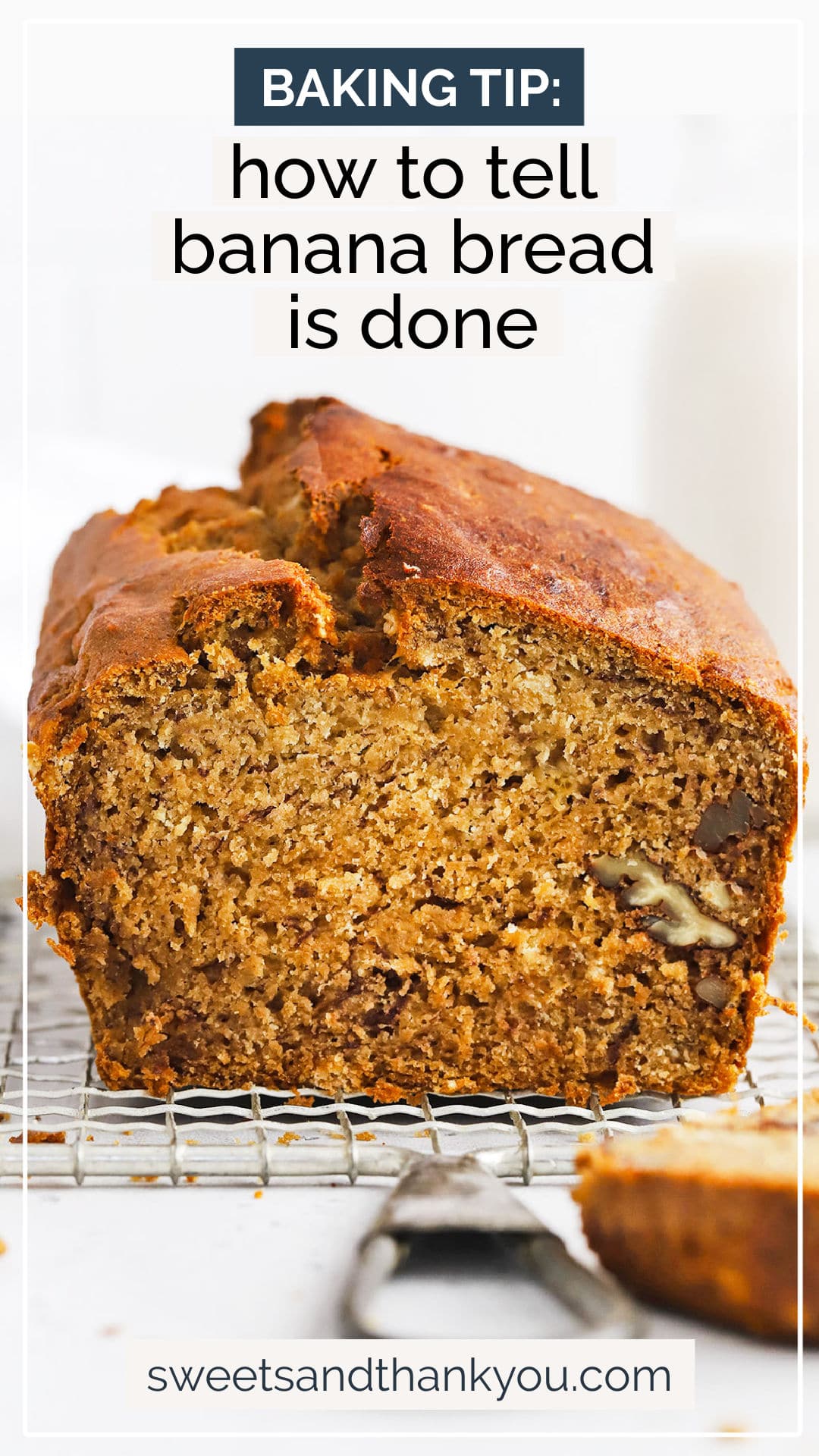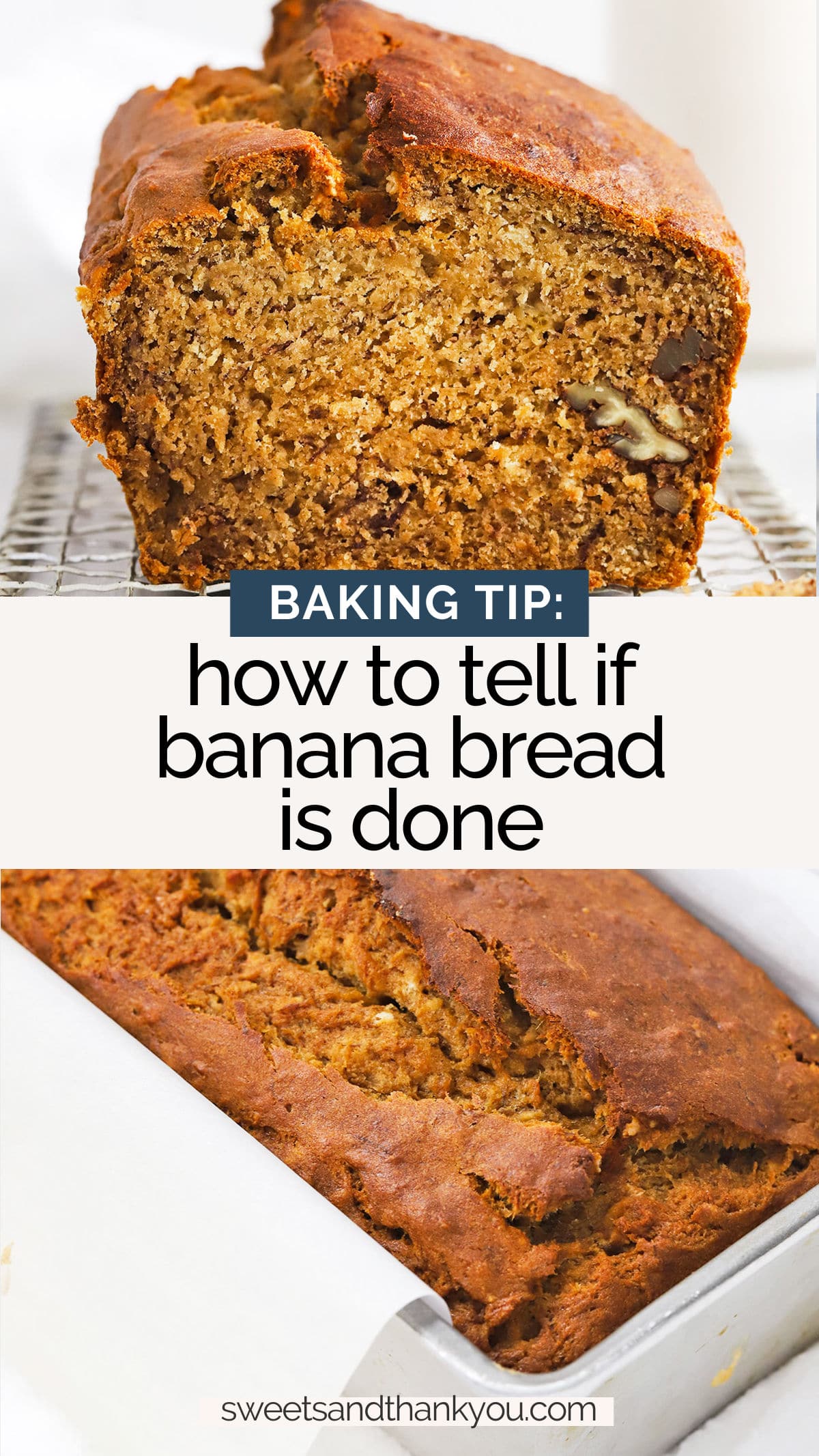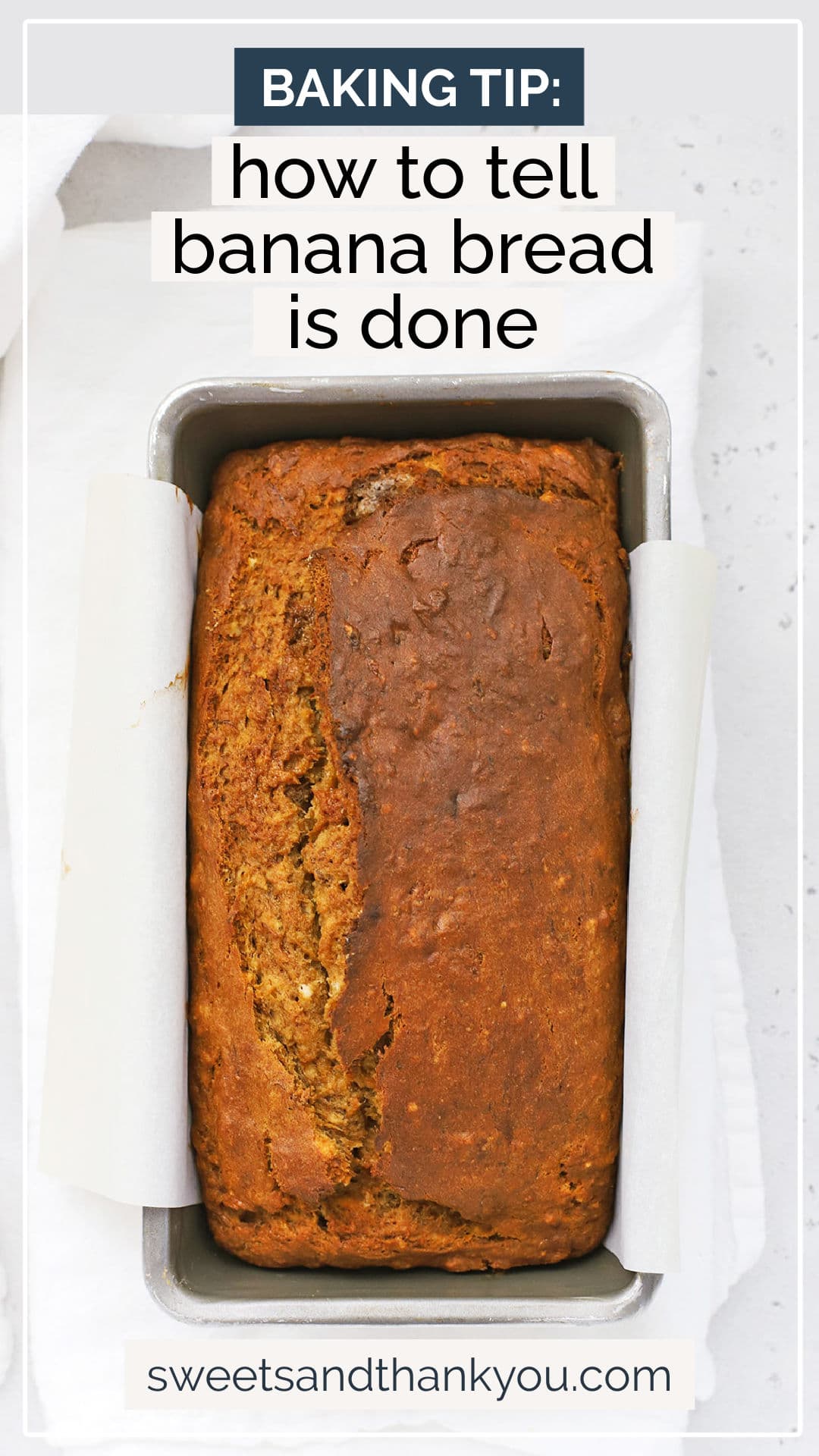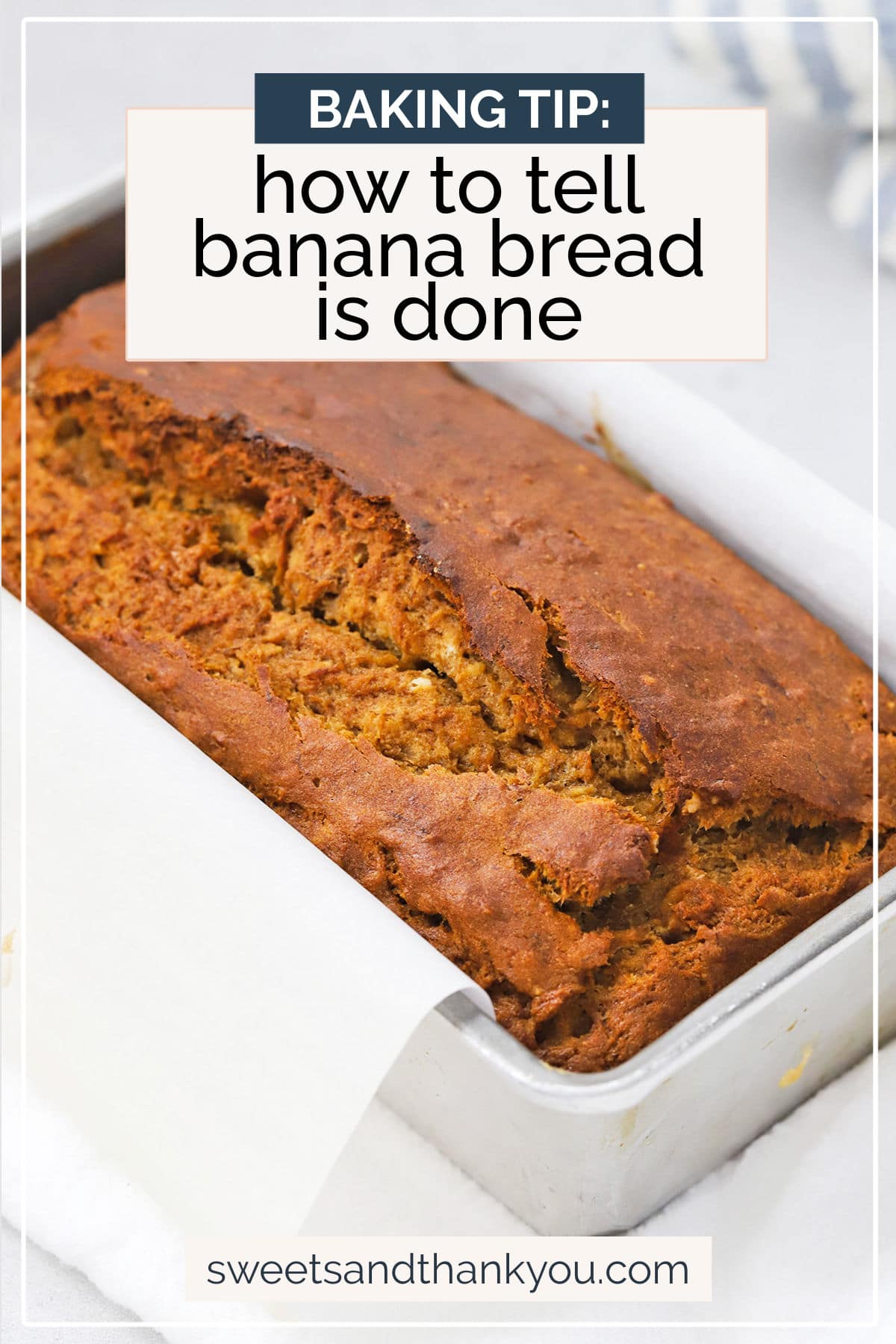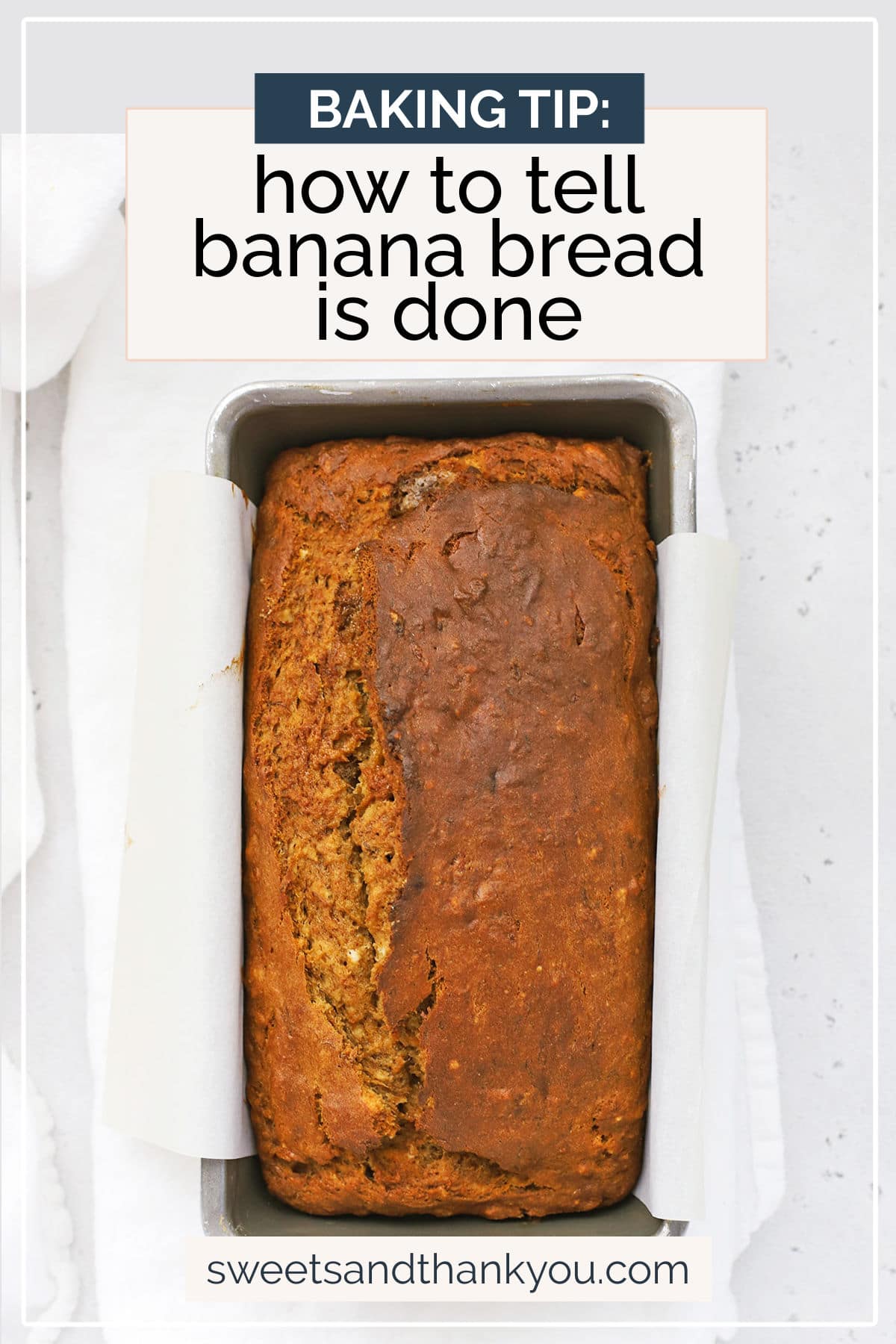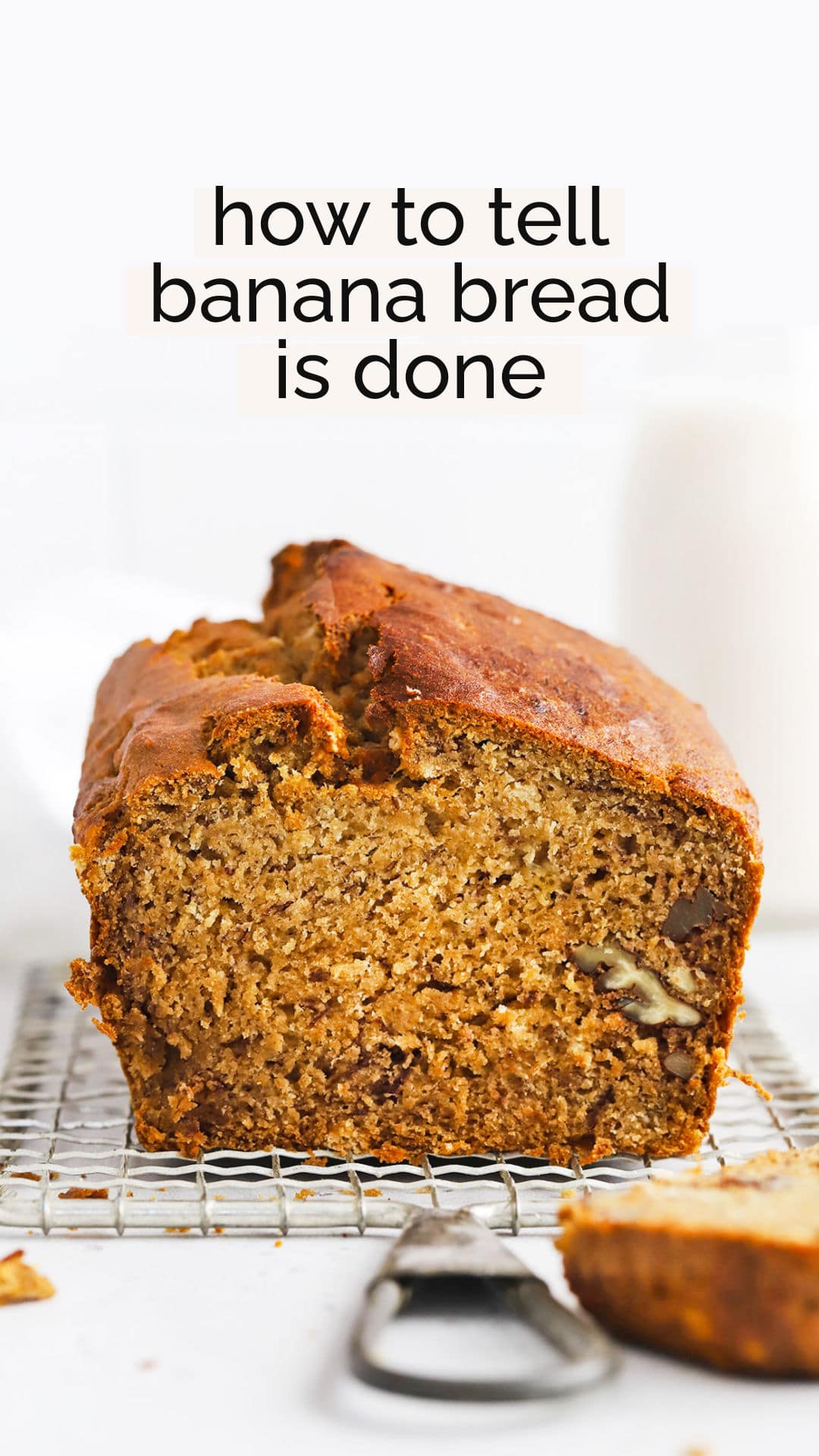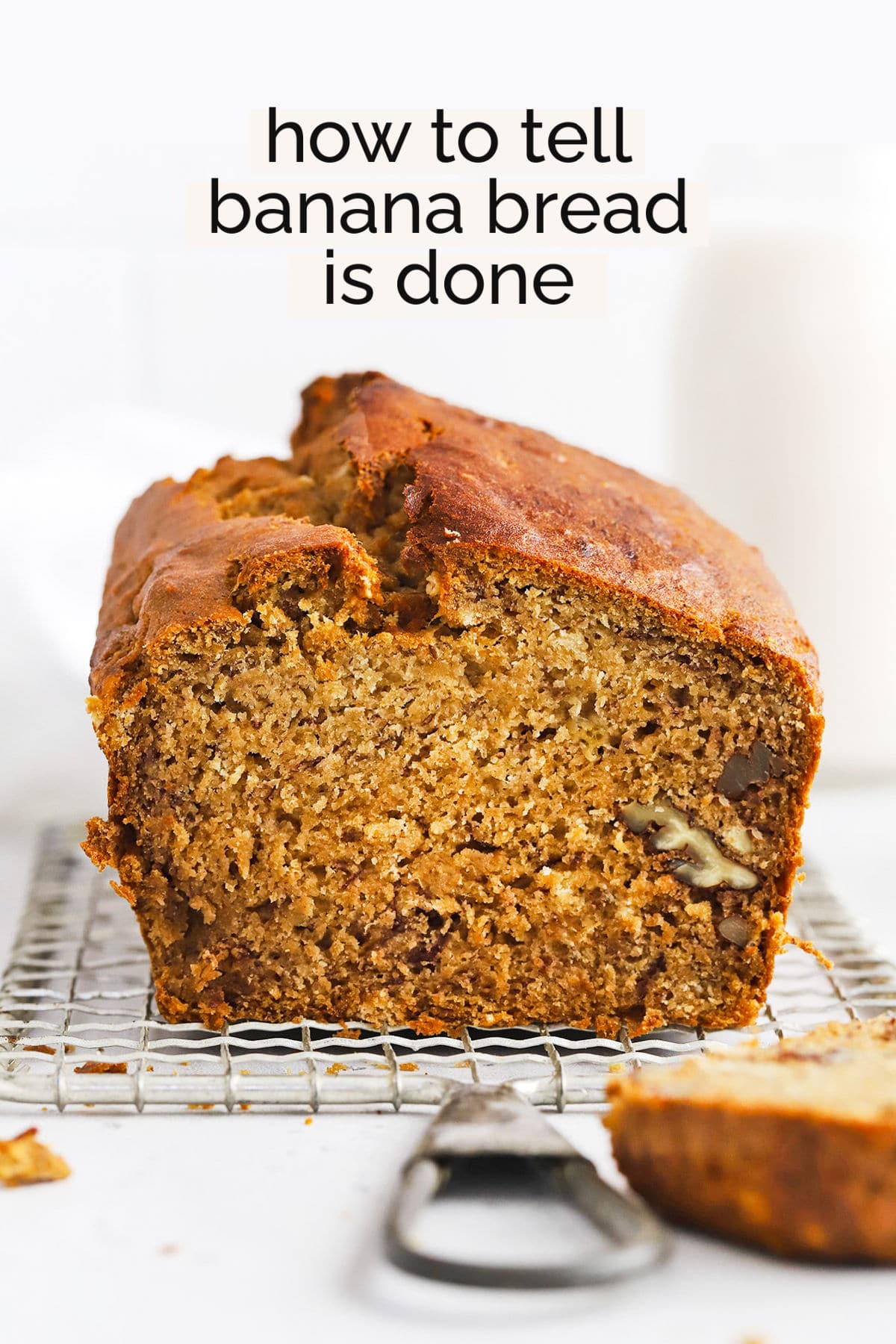How To Tell When Banana Bread Is Done
This post may contain affiliate links. See our disclosure policy for more.
How To Tell When Banana Bread Is Done – How do you know banana bread is done? We’ll walk you through our tried & true tricks so you don’t end up with under-baked banana bread ever again.
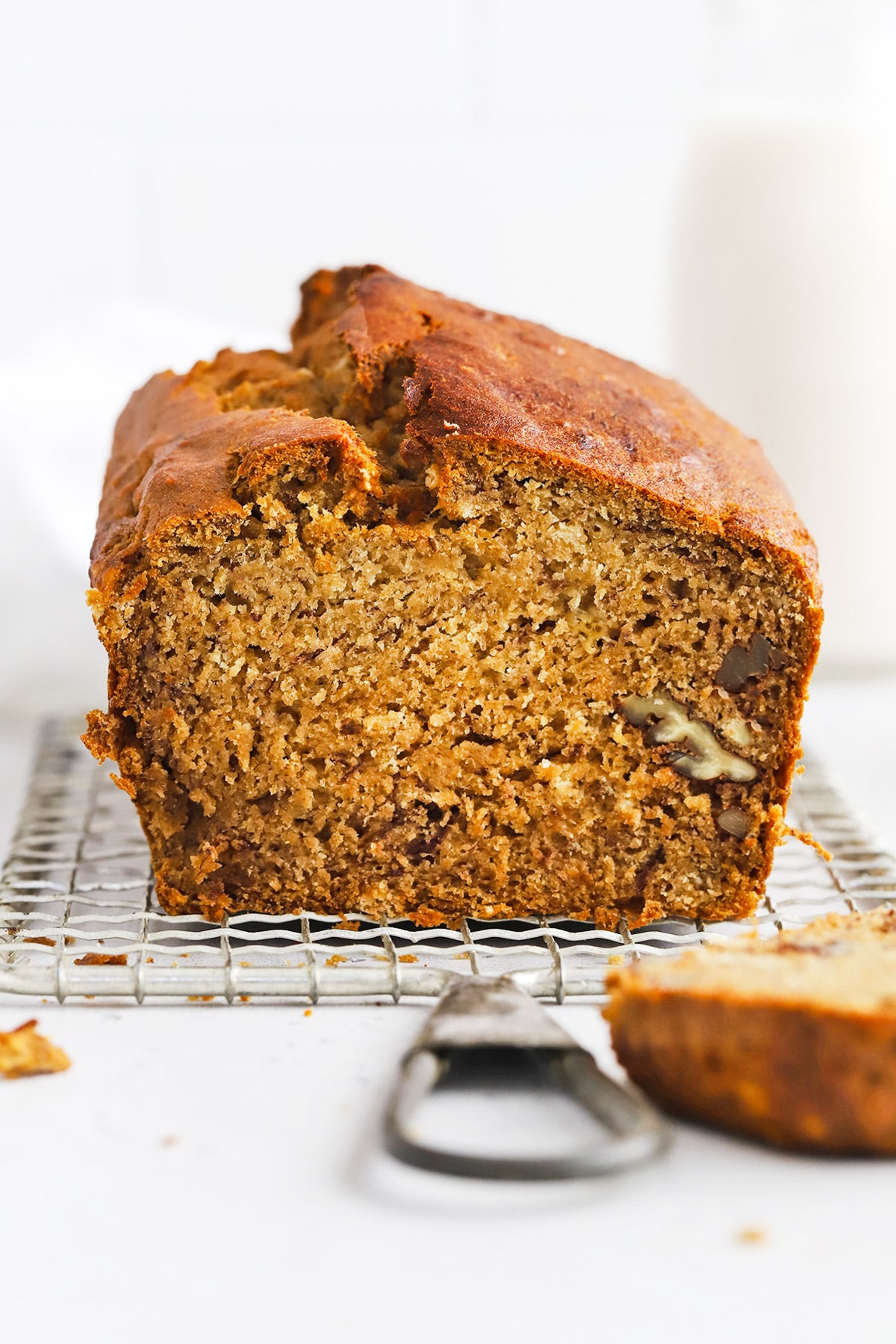
You mix up a batch of banana bread and slide it into the oven. As it bakes, the house fills with gorgeous, sweet smells. You pull out your gorgeous loaf, let it cool a bit, and slice into it…only to discover the middle is doughy or wet.
UGH!!! ISN’T THAT THE WORST?!!!
It’s SO FRUSTRATING when a bake doesn’t turn out, especially if it feels like you can’t really fix it. Today, I’ll walk you through alllll the tricks we know to tell if your banana bread is done baking. I want to make sure you don’t end up with under-baked banana bread again!
Start pre-heating the oven and grab that bunch of ripe bananas! Let’s jump in!
How To Tell Banana Bread Is Done, At A Glance:
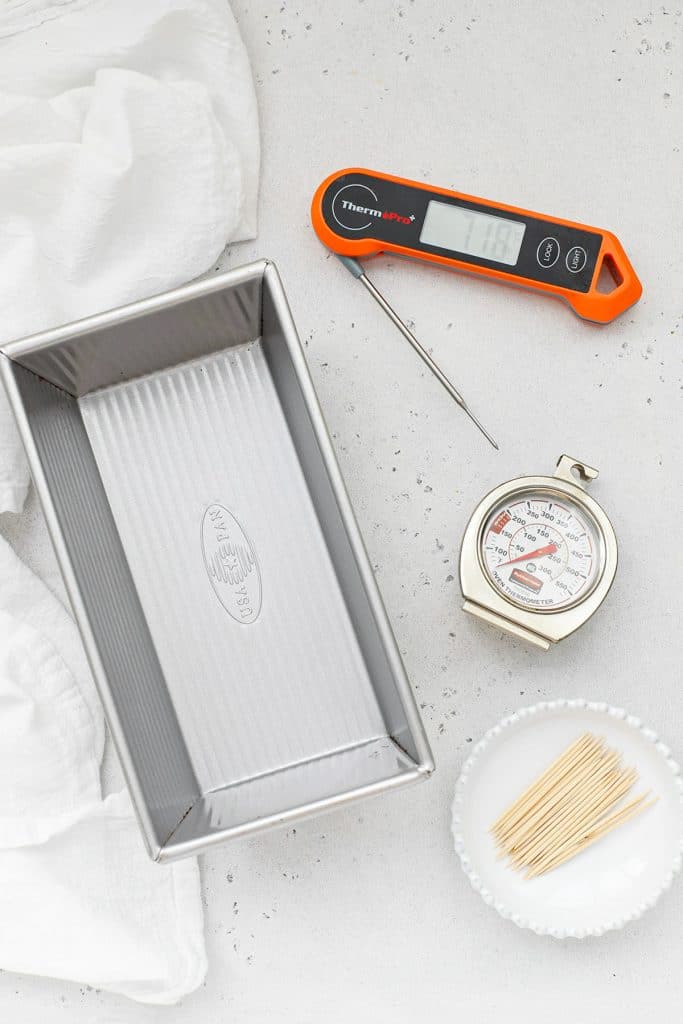
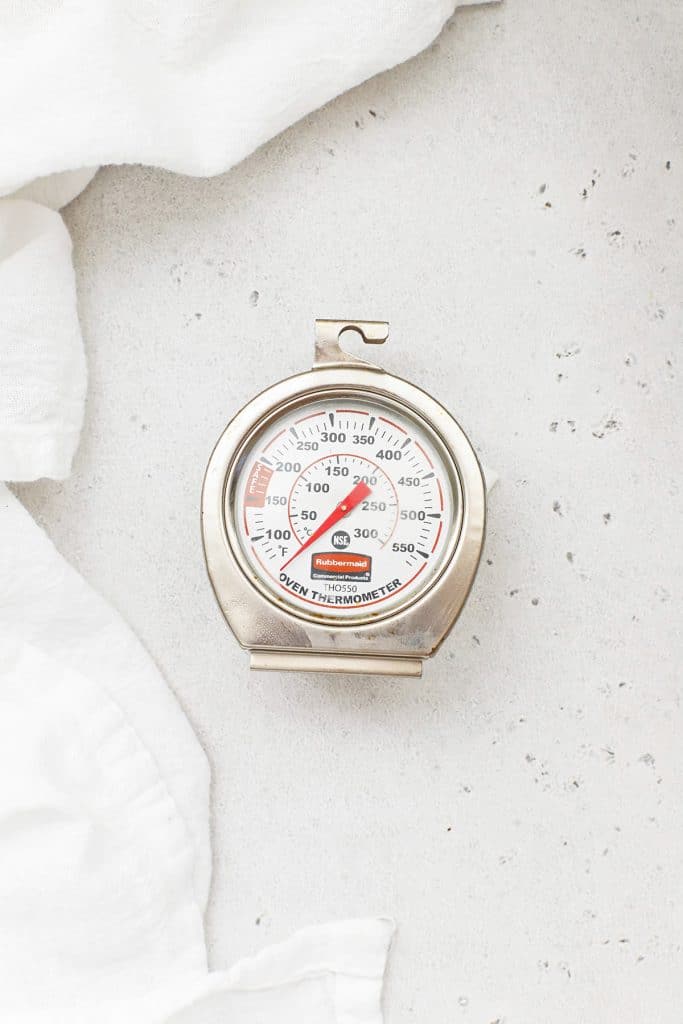
Start With The Right Tools & Settings:
Getting a loaf of banana bread properly baked can be almost impossible if you’re not starting off on the right foot. Here are a few important things to check before you get started:
1. Check Your Oven Temperature
Use an inexpensive oven thermometer (less than $10!) to check that your oven is actually the temperature you *think* it is. Most ovens aren’t perfectly accurate, and it’s common for an oven (even a high-quality oven!) to be off by at least 10-15 degrees. I’ve had brand-new ovens that were off by 25-35 degrees! You may have to actually preheat 15-25 degrees higher or lower than the recipe calls for to get your oven to the proper temperature. If your oven runs hot, your bakes can burn on the outside before they finish cooking on the inside. If it runs cold, your bakes can take longer, or not cook through all the way. Temperature matters!
2. Preheat Properly
Hand in hand with checking your oven temperature, make sure you’re giving your oven enough time to fully preheat. Most ovens beep or signal that they’re preheated LONG before they’re actually pre-heated. Use that oven thermometer to check that you’re truly at the right temperature before you bake your banana bread. Popping it in when it’s 25 degrees away from reaching the right temperature can totally throw off the bake time!
3. Use Light Colored Baking Pans (In The Correct Size)
I recommend light-colored loaf pans and baking pans for cakes, quick breads, breads, brownies, etc. They tend to distribute heat more evenly. Using dark metal can cause the outside to brown too quickly, while using glass can take longer to bake all the way through.
Also: check the size! Make sure you’re using the correct size loaf pan called for in your recipe. Using one longer/shorter/deeper/shallower than the one called for can throw off your bake.
4. Weigh Or Measure Your Flour Properly
Lastly, be SUPER sure you’re using the Scoop & Level Method to measure your flour properly (or better yet weigh it!) to be sure you’re not throwing off the bake time by adding too much or too little flour. Especially in gluten-free bakes, I’ve found that even a few tablespoons too much flour can mean gummy, gluey banana bread. No bueno.
5. Don’t Forget About Climate!
One last thing to keep in mind is that your climate and elevation can impact your bakes. Very humid climates, high altitude climates, or extremely dry climates can all have an impact on your bake.
Now that you’re set up with the right temperature and pans, let’s talk about all the different ways to tell when banana bread is done…
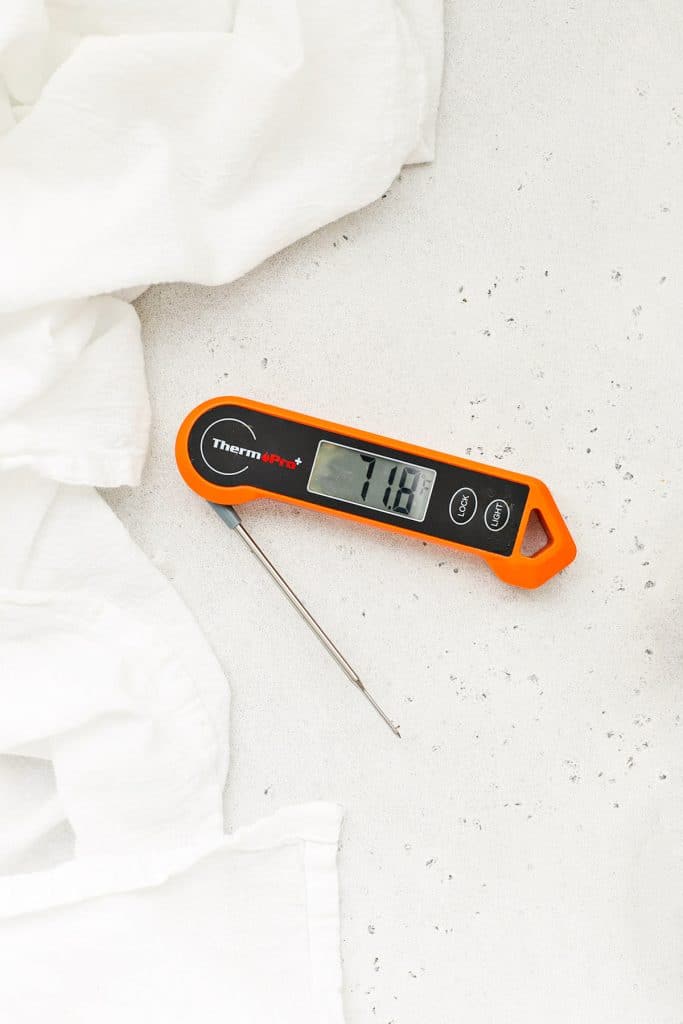
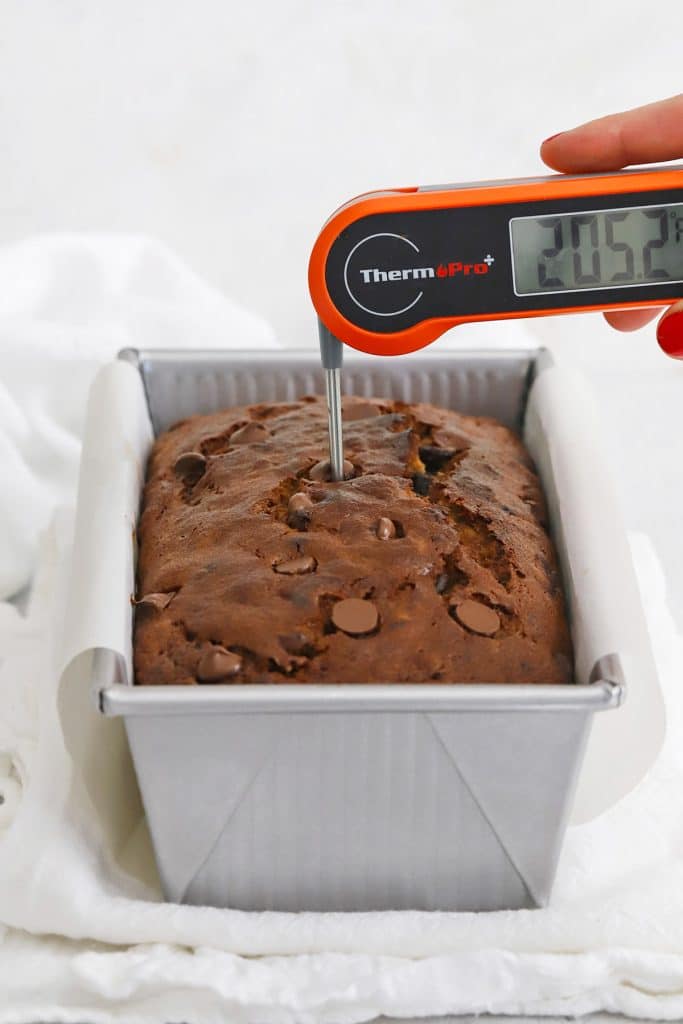
Use An Instant Read Thermometer (Most Reliable)
Hands-down the most accurate and reliable way to tell your banana bread is done is to take its temperature with an instant read thermometer.
These are 100% worth investing in if you do a lot of baking or cook meat regularly. There are all kinds of price points–this one is considered a gold standard (though it *is* pricey), while this one (pictured) is affordable and works great. So what temperature should banana bread be when it’s fully baked?
The interior of your banana bread should register 200-205 degrees F for regular bakes, and 205-210 for gluten-free bakes. In my experience (in my climate, with my oven, and the recipes I use), my banana bread is fully baked through when it’s at 205 degrees F. (You will soon be able to tell how things work in your kitchen & climate, whether you need a few degrees more or less than I do.)
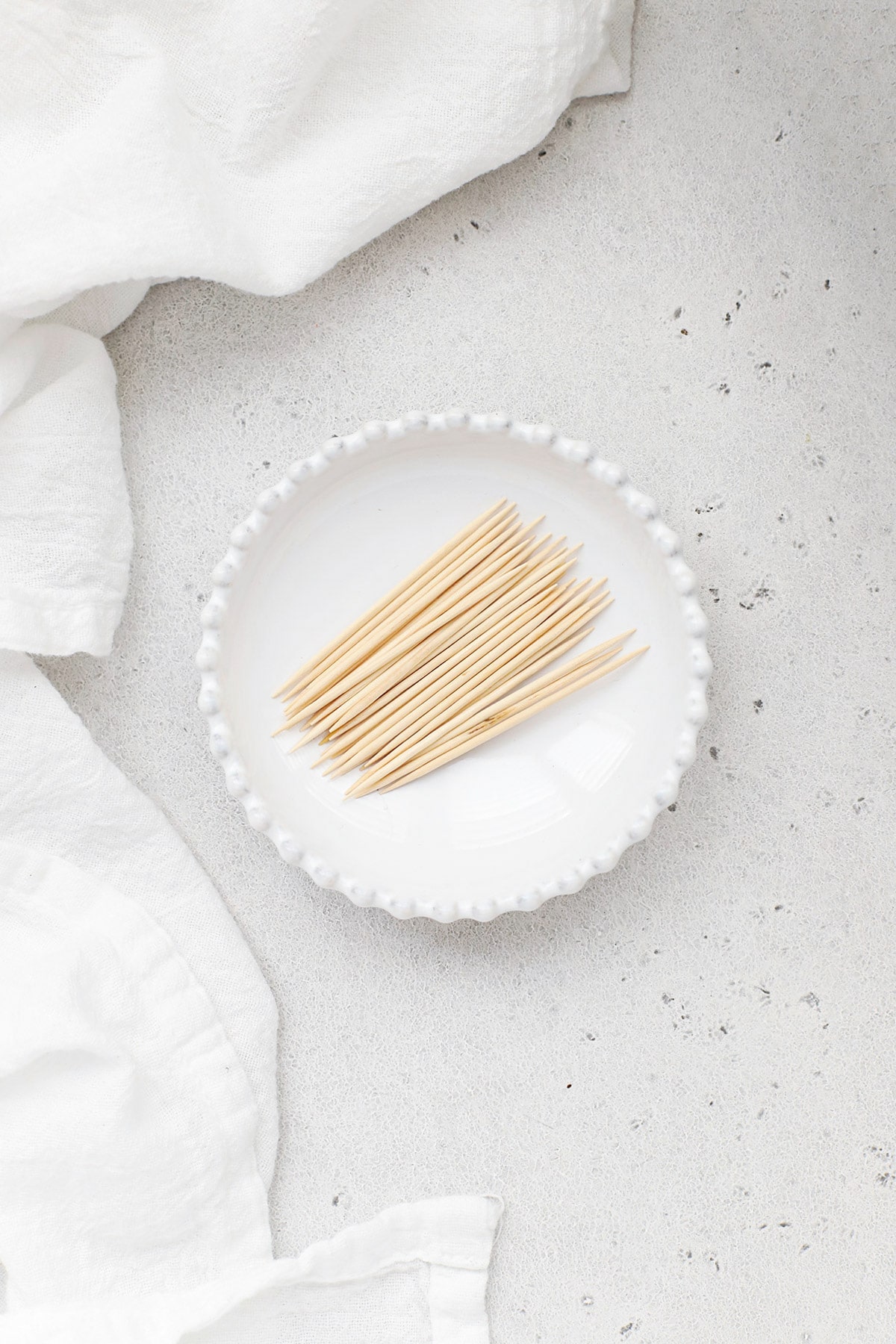
Try The Knife Or Toothpick Method
Have you ever seen a recipe say something like “bake ___ minutes or until a toothpick inserted in the center comes out clean”? That’s the toothpick trick!
Basically, when your banana bread is done baking, you can check for doneness by inserting a toothpick, wooden skewer, or thin blade knife into the center of the bread. When you pull it out, it should be nearly clean, with perhaps just a few moist crumbs and no smudges or streaks of shiny, wet batter.
I recommend checking 2-3 points in your banana bread around the center, since sometimes you don’t insert your toothpick far enough down on the first try. Taking a few “readings” will give you more accurate results.
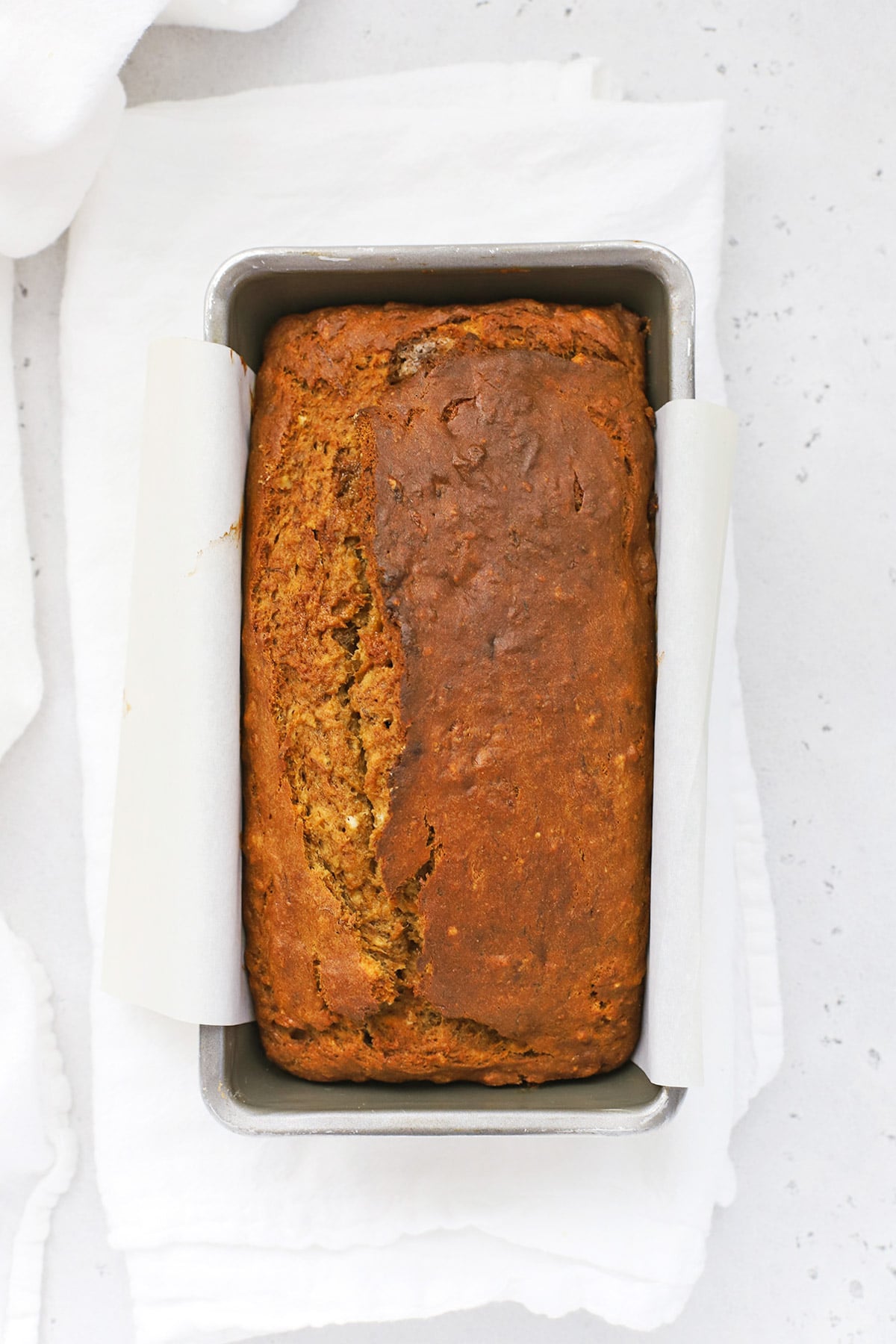
Check Your Banana Bread By Touch & Sight
So how do you check if banana bread is done without a thermometer or a toothpick? You follow your senses! This method is the least reliable, but sometimes it’s all you have to go off of. Here are a few things to look for when checking if banana bread is done.
1. Check Your Banana Bread By Touch
Next, banana bread is fully baked when it springs back after being gently pressed on the top. (Do this carefully, since it’s hot!) But if your fingerprint indent stays there, or it bounces back very slowly, it’s probably not quite done baking yet.
2. Check The Color Of Your Banana Bread
Most banana bread recipes bake up to a deep golden brown. The natural sugar in the bananas and the sugar, brown sugar, or sweetener added to the banana bread recipe get caramelized during the bake. So you don’t want to pull it out when it’s barely golden or if there are wet or shiny sections anywhere on the surface. It should be a deep, golden brown and should look set.
(Note: Color isn’t a reliable option when you’re baking a chocolate banana bread or if you’ve totally covered the top of the banana bread with chocolate chips or nuts as you likely won’t be able to tell by sight how much browning has taken place with a dark, chocolatey batter.)
3. Check The Sides Of Your Banana Bread
Sometimes (but not always!), banana bread will start to slightly pull away from the sides of the pan as it bakes. The batter tightens up as it sets, which can mean it starts to pull away from the sides of the loaf pan when it’s done.
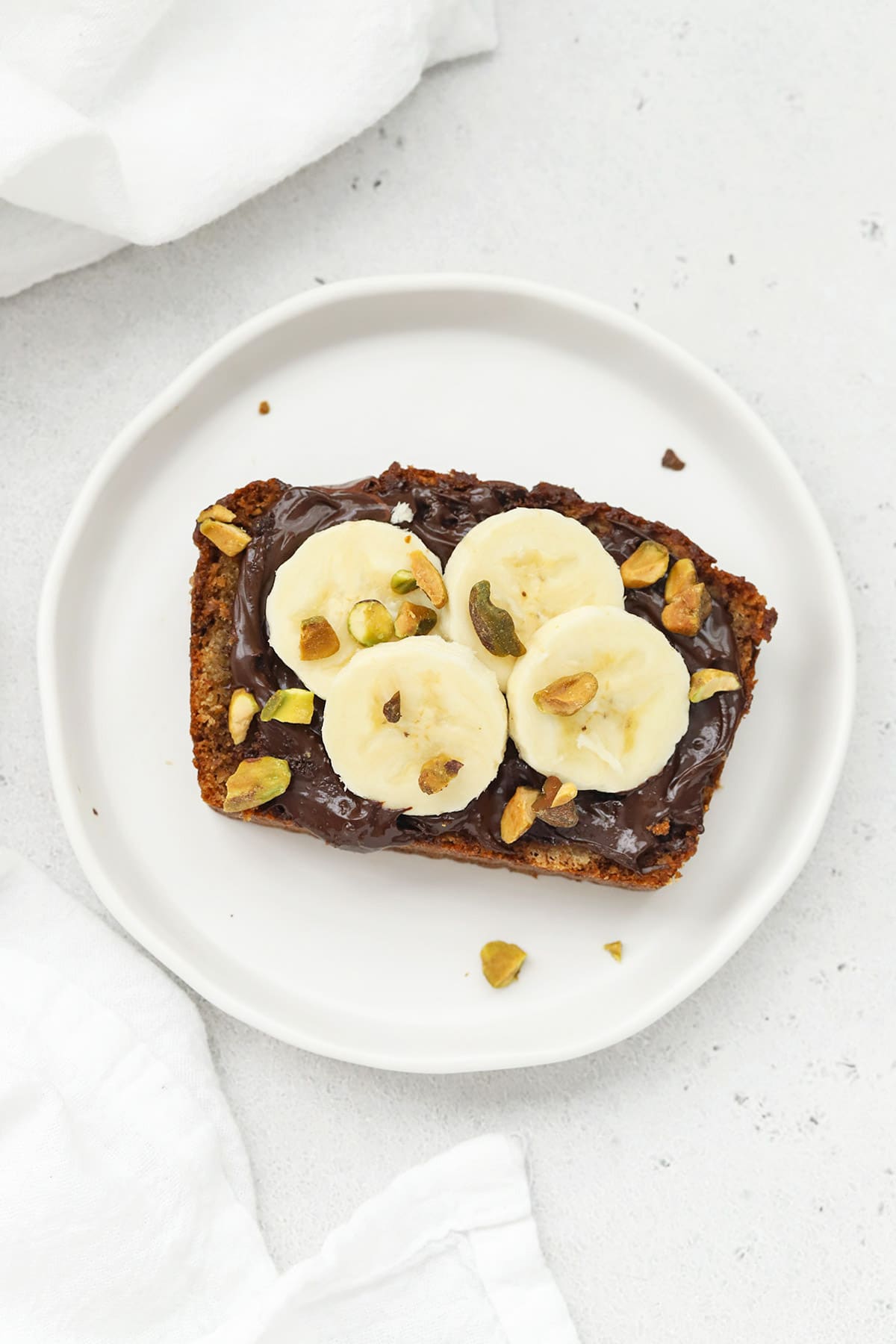
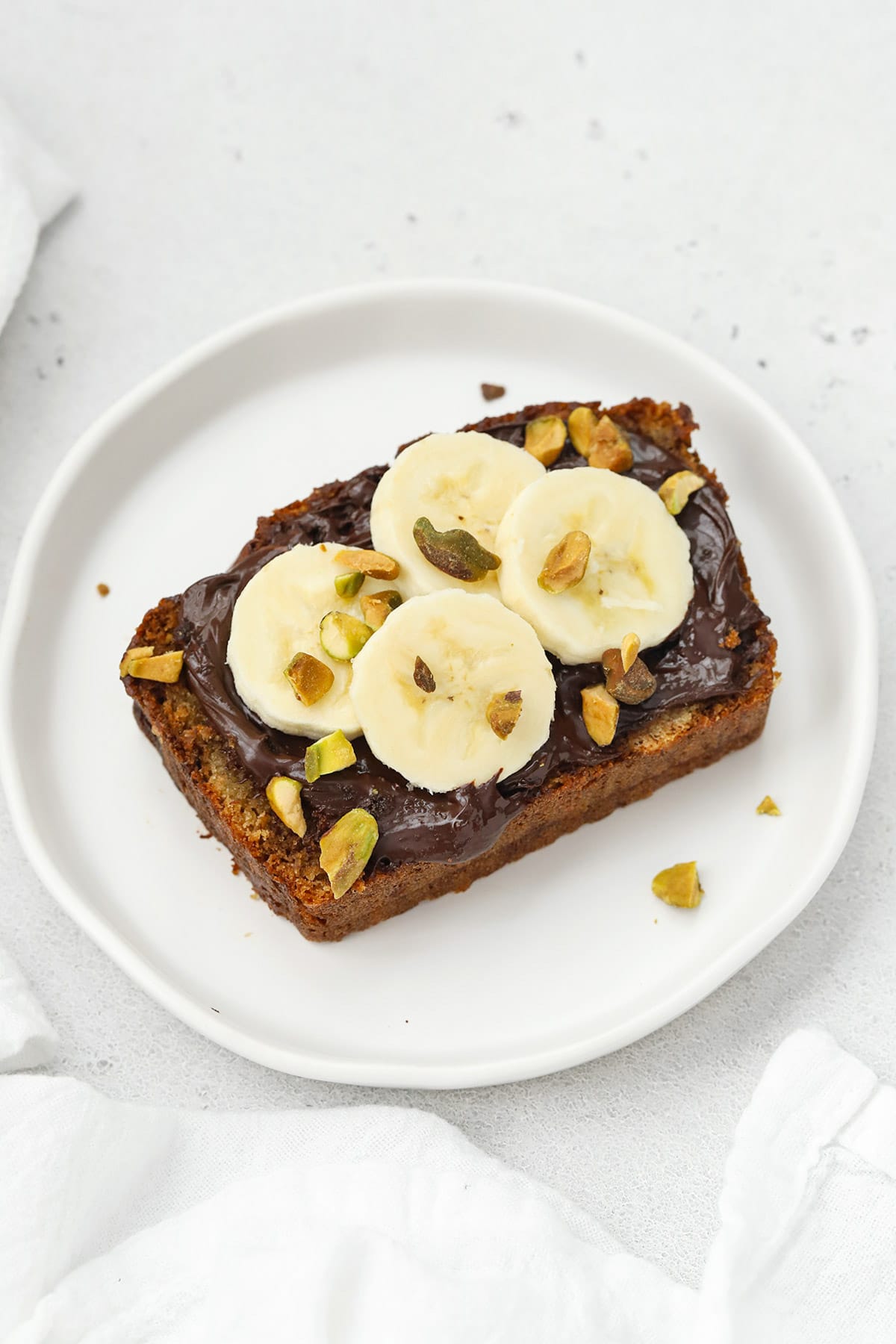
How To Fix Under-Baked Banana Bread
So what happens when you thought you had it right only to discover your banana bread is under-baked or doughy in the middle? How do you fix under-baked banana bread?
First, let it set properly.
Banana bread can appear underdone (even if it’s reached the proper internal temperature), when it hasn’t had enough time to cool. Like most breads, banana bread continues to set and the appearance inside will continue to change as it cools, so let that banana bread cool to room temperature on a cooling rack before slicing, when you can.
Pop It Back Into The Oven To Bake Longer.
Quick disclaimer: this will not give you the same texture results as having baked it properly on the first try (the top and sides may start to dry out.), and it can’t always rescue doughy banana bread. BUT. If you’d rather not toss it completely, you can use this method to try to salvage the banana bread the best you can. Pop your banana bread back into the oven for another 10-20 minutes at 350 degrees to let it bake longer. (You can tent the top loosely with aluminum foil if you don’t want the top to brown any further). Use the methods above to check your banana bread again!
More Ideas For Rescuing Undercooked Banana Bread:
- Toast It In a Toaster Oven. Cut the banana bread into slices and pop them into the toaster oven to brown and cook longer. (This won’t work with severely under-baked banana bread, but works like a charm for slightly under-baked banana bread.)
- Make It Into “French Toast.” Toast slices of banana bread with a little butter on a griddle or in a skillet. You should be able to see when it’s cooked through, and you can top it with fresh fruit, a drizzle one peanut butter or a swirl of Nutella, almost like French toast!
- Cut off the baked sections into cubes (discard anything under-cooked), and use the cubes to snack on or make a trifle.
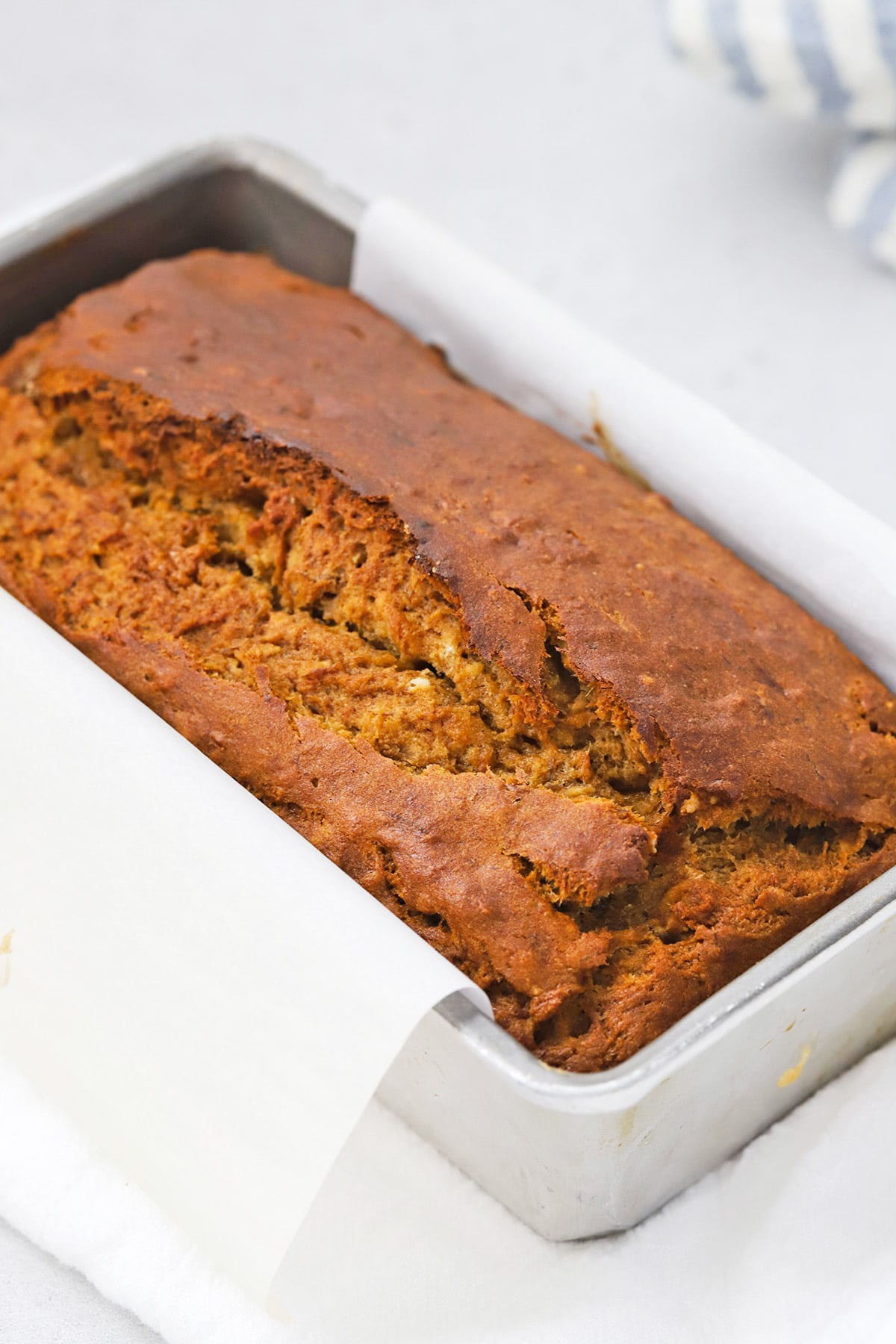
Yummy Banana Bread Recipes:
- Gluten-Free Brown Butter Banana Bread (The BEST Banana Bread Recipe!)
- (Gluten-Free) Banana Bread With Chocolate-Cinnamon Swirl (love this flavor!) – One Lovely Life
- Peanut Butter Chocolate Swirl Banana Bread – Bianca Zapatka
- Pumpkin Banana Bread – All The Healthy Things
- Banana Nut Bread (With Pecans) – Big Man’s World

